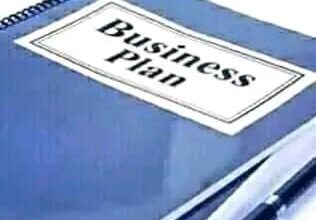Product Development and Prototyping: From Idea to Tangible Product

Turning a brilliant idea into a tangible product requires a systematic approach that involves multiple stages of product development and prototyping.
From brainstorming concepts to refining designs and creating functional prototypes, each step plays a crucial role in ensuring the success of the final product.
8 Project Development Ideas
In this article, we will take you through the journey of product development and prototyping, offering insights into the process and highlighting its significance.
1. Ideation and Conceptualization
The journey begins with an idea, a spark that has the potential to solve a problem or meet a need. During this phase, teams brainstorm, research the market, and identify target audiences.
By understanding customer pain points and analyzing existing solutions, you can refine your idea and define its unique selling proposition.
2. Market Research
Market research is the foundation of a successful product development process. It involves studying the competition, identifying trends, and assessing the demand for your product. This step helps you align your idea with market needs and create a product that stands out.
3. Design and Prototyping
Once you have a clear concept, it’s time to bring it to life through design and prototyping.
Design involves creating detailed drawings and specifications that outline the product’s appearance, functionality, and dimensions.
Prototyping comes next, allowing you to build a preliminary version of your product. This prototype can be refined iteratively based on feedback and testing.
4. Iterative Refinement
Prototypes undergo several rounds of testing and refinement. This iterative process helps identify flaws, improve functionality, and enhance user experience. Collaborating with engineers and designers, you can fine-tune your product to meet quality standards and exceed customer expectations.
5. Testing and Validation
Thorough testing is essential to ensure your product functions as intended and meets safety regulations. This stage involves various types of testing, from usability and functionality testing to stress testing. Validating your product through real-world simulations helps uncover potential issues before mass production.
6. Manufacturing Preparation
With a validated prototype, you can now prepare for manufacturing. This involves selecting materials, sourcing suppliers, and setting up production processes. Working closely with manufacturers helps ensure a smooth transition from prototype to mass production.
7. Launch and Marketing
As your product takes its final form, it’s time to plan your launch and marketing strategies. Building a strong brand identity, creating compelling marketing materials, and identifying distribution channels are crucial to generating excitement and attracting customers.
8. Feedback Loop
Even after the product is launched, the journey doesn’t end. Listening to customer feedback and analyzing how the product performs in the market allows you to make necessary adjustments and improvements over time.
FAQs
How long does the product development process usually take?
The duration of the product development process varies depending on the complexity of the product. It can take several months to a few years, considering the stages of design, prototyping, testing, and manufacturing.
What is the significance of prototyping in product development?
Prototyping allows you to visualize your concept, identify design flaws early, and gather user feedback. It’s an essential step to refine your idea before investing in mass production.
How can I protect my product idea during the development process?
Consider filing for patents, trademarks, or copyrights to protect your intellectual property. It’s also advisable to work with non-disclosure agreements (NDAs) when collaborating with partners and manufacturers.
What role does market research play in product development?
Market research helps you understand your target audience, identify competitors, and assess the demand for your product. It ensures that your product aligns with market needs and has a higher chance of success.
Also Read: How to Choose the Right Location for Your Business





